There is no end to the various types of beekeeping you can purchase for your beekeeping hobby. Beekeepers are constantly inventing new gadgets to simplify beekeeping, and the bee supply companies are more than happy to peddle them. In this article we will take a look at the essential equipment that you will need. There are plenty of things you can go spend your money on, some of it useful and some of it not so useful. Here we focus only on the essentials or “must haves” if you plan to keep bees.
Let’s begin with the hive. You will need to buy basic hive equipment to house your bees in. It’s normally recommended that you start two hives your first year, as it will increase your odds of success. If one of your hive has problems, you still have the other. More importantly, if you have at least one healthy hive, you’ll be able to see the difference between a thriving hive and a lackluster hive. In terms of equipment, a complete hive consists of a bottom board, entrance reducer, at least one hive body with frames and wax foundation, an inner cover, and a telescoping outer cover. Bottom boards come in a variety of styles, but we would recommend you get a screened bottom board, preferably one that comes with a slide out white mite board – we’ll talk more about the mite board in a future installment on how to keep your bees healthy – stay tuned.

Traditionally, hives are painted white. We randomly pick out a number of bright happy colors, and our teenage daughters are more than happy to help out with the painting!
Hive bodies here in the USA typically come in three sizes – deep, medium, and shallow. In addition, you can get either eight frame equipment or ten frame. So what size should you get? Well, it depends on where you live, and much weight you can lift. Here in Michigan, we strongly recommend your hive consist of two ten frame deep hive bodies. This gives the bees plenty of room to store up lots of surplus honey to make it through the long winter months. In addition, it provides the bees with larger contiguous combs which is important when the bees are clustered in the winter. Many beekeepers (even here in Michigan) like to use all medium hive bodies for both the brood nest, and for honey supers. The rationale is that they only have to deal with one kind of equipment, and a full medium hive body is quite a bit less to lift than a deep hive body. This is quite true, as a deep hive body full of honey can weigh as much as 90 pounds! The rationale for using all medium hive bodies makes a lot of sense – from the beekeepers perspective. However, in our operation, we like to do what’s best from the bees’ perspective. In our experience, we have much better success wintering bees in deep hive bodies here in Michigan. We’re also quite capable of lifting deep supers, so we don’t see a good reason for using mediums in the brood nest. When making a decision on how many hive bodies and which size you will use for your hive’s brood nest, we would suggest you check with your mentor (or your local bee club if you don’t have a mentor) and find out what is standard practice in your particular locality.
The 8 vs 10 frame decision is not so clear cut. Eight frame equipment was very popular years ago (we used some 25+ years ago when we started keeping bees!), then sort of disappeared from the scene. Lately, all the suppliers have once again began offering 8 frame equipment. I suppose 8 frame hive bodies are slightly lighter to lift when full, and some argue that the width is more representative of a cavity bees would use to nest in the wild. If you are convinced this is an advantage, than by all means, use 8 frame equipment. However, do make sure you commit to either one size or the other. You want to avoid having a mix of equipment, some 8 frame, and some 10 frame, as you can be certain that when that 10 frame hive needs supering, you’ll only have 8 frame empties in the shed!
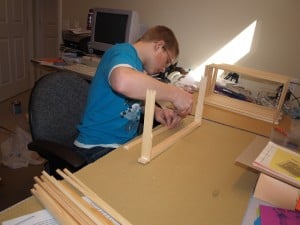
If you only have 20-40 frames to assemble, no problem. All you need is a hammer, some gorilla glue, and a free Saturday afternoon. If you need to do 50 or more, you might want to get a frame nailing jig and an air stapler!
Frames come in many different styles. We like the ones with wedged top bars, and single piece grooved bottom bar. We like this style because we can assemble them very quickly in a frame nailing jig with an air staple gun. If you plan to assemble the frames with hand tools, you can go with whatever style suits your fancy.
You’ll need a sheet of wax foundation for each frame. For brood chambers we use the foundation that has vertical wires and hooks already embedded. You will not need to embed horizontal support wires into your foundation for frames that will be used only in the brood nest. Follow the advice of your bee supplier when purchasing frames and foundation. It’s probably easiest if you buy all your equipment from one supplier, but the sizes are all standardized, so we tend to shop around a bit, and buy the components where we can get it cheapest.
There are a number of different style hive covers available, all the way from fancy English garden hive style covers, to super simple and cheap commercial covers. We tend to prefer the wood telescoping covers with a tin sheet tacked on to help shed the elements and prolong the life of the cover. We’ve bought a number of the plastic telescoping covers Walter T. Kelley sells, but we would strongly encourage you to avoid them like the plague. They fit quite fine in hot weather, but soon as it gets cold if you pop one off good luck getting it back over the inner cover. They seem to shrink in cold weather. We’ve had some that we bought many years ago that worked fine, but the last batch we bought a couple of years back are nothing but a nuisance.
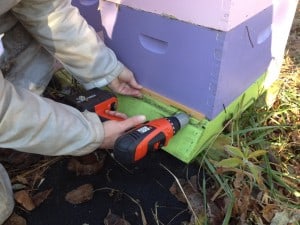
We always insert entrance reducers in preparation for the winter months. Use them when your feeding your bees as well to help prevent robbing.
Entrance reducers also come in many different shapes and sizes. Its important to reduce the entrance to the hive during the winter months when the bees are clustered, as the hive becomes a nice warm place that is attractive to mice. If mice gain entrance, they will build a nest in the bottom without any threat from the clustered bees. In the process they will chew up and destroy the combs your bees worked so hard during the summer to create. Entrance reducers are also very useful in the spring or fall when you are feeding the bees sugar syrup. With the entrance reduced, the bees will have a easier time defending their hive from robbing bees from neighboring hives.
In addition to your basic hive, you will also want some additional hive bodies (referred to as honey supers) for honey production. The number and size really depends on where you live and what kind of nectar flows your bees will have available. Here in Michigan, we typically plan on averaging 3-4 medium 10 frame supers per colony. These supers will go on your established colonies immediately before the honey flow commences, which is typically sometime in May for us. This will vary in your locality, and once again it is best to consult with your local mentor or bee club to determine the number of supers you will need and when you should be ready to place them. You likely won’t need as many honey supers for your first year. When assembling frames for honey production, we use foundation that has vertical wires/hooks already embedded. We also embed additional horizontal wires for additional support. This is important, because these frames will be spun in a honey extractor and without wiring horizontally they can be damaged during the extraction process. Embedding the horizontal wires is rather time consuming, but the way we look at it, once a super is drawn it can be in service for many years.
Some people ask about queen excluders. These are a wired grid contraption that allow worker bees to pass through, but not the queen. Beekeepers place them between the brood chamber and the honey supers to keep the queen from laying eggs in the honey super. We don’t have strong opinion for or against excluders. We simply never have had a need to use them. We extract our honey once per year in late July or early August. If the queen happened to lay in a honey super, usually it isn’t much and by the time we pull the supers for extraction, most of that brood is hatched and replaced with honey.
Some suppliers sell the above equipment completely assembled and painted. However, even those suppliers will sell it to you cheaper unassembled. We suggest you buy your equipment unassembled and put it together yourself. If you have children, involve them in the process. Not only does this provide you an opportunity to teach them to hammer a nail in straight, but it will also tweak their interest in beekeeping. Even if you aren’t very handy, don’t worry, it’s easy to assemble beehives. Most suppliers will insert an instruction sheet describing the process, and some even provide video tutorials! You will also need to paint your equipment. Purchase a good exterior latex paint, and apply a few generous coats. Color really doesn’t matter, though some say lighter colors make for a cooler hive during direct sunlight in the summer. Be sure to give yourself enough time to assemble and paint your new beehives. If you’ve ordered bees for the coming spring, assemble your equipment during the winter months, so you can be sure you’re ready when your bees finally arrive.
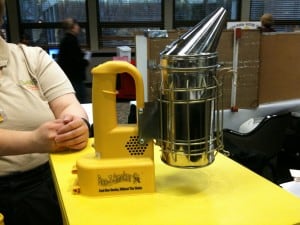
Beekeeping power tools! We saw this fancy smoker at a bee convention. This is a bit on the overkill side!
So that’s the essential equipment you need for the bees themselves. But you’ll also need some equipment for yourself – the beekeeper! At minimal you will need a bee veil, a hive tool, and a smoker. Veils come in all sorts of shapes and sizes as well. If you find the bees intimidating, then go ahead and buy yourself a full bee suit. You’ll look like an astronaut, but you won’t get stung quite as much. If you get along good with bees, you can get away with just purchasing a simple veil and wearing it over your favorite straw hat. In any case, do wear a veil when you work your bees, especially if you are a beginner. If the bees are having a bad day and decide they don’t like you, they can mess you up really quick if you aren’t wearing a veil. Anybody who has gotten stung around their eyes by a honey bee will tell you its not a lot of fun.
Next, you’ll want to get yourself a good bee smoker. When you open your hive, a few puffs of smokes across the top bars, will send the girls scurrying down below and make them easy to work with. Smokers come in a variety of styles as well. My only recommendation is to make sure its a good sized smoker. Some of the smokers I’ve seen suppliers send out in the beginner kits are really small, won’t hold much fuel and go out real quick if you don’t keep actively pumping the bellows. Shame on them for selling junk like that! Get yourself a decent smoker and you’ll use it for many years.
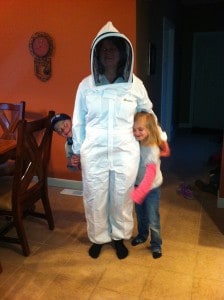
If you feel more secure in a full bee suit, by all means, get yourself one! Whatever protection you use when working bees, do be sure to wear at least a veil!
Finally, to finish outfitting your beekeeping toolbox, you’ll need a hive tool. This is perhaps the most important of all. You can work bees without smoke (not recommended) and also without a veil (definitely not recommended) but even with the best astronaut bee suit and power smoker, you won’t get very far if you loose your hive tool or simply forget to take it along! Bees use propolis to glue the hive components together. When you try to pull out a frame to examine it, you will need a hive tool to pry it loose and leverage it out of its position. Hive tools, are inexpensive, and your bee supplier will have all sorts of styles in stock. Just stick with the basic $3-$4 hive tool and you’ll do just fine.
These are the essentials when it comes to beekeeping equipment. Happily, most suppliers are more than happy to serve the hobby beekeeper market and offer beginner kits that let you buy all of the above and more in a single beginner’s kit. There are many suppliers out there to choose from. Here is a list of suppliers (not in any particular order) we have purchased from who are all reputable and offer decent equipment:
- Betterbee
- Brushy Mountain Bee Farm
- Dadant
- Mann Lake Ltd.
- Miller Bee Supply
- Walter T. Kelley
- Western Bee Supply
There are other vendors, but these are the ones we’ve purchased from. Prices vary at these vendors. If you plan to buy a lot of equipment (100+ hive bodies for example) you’ll want to call the vendor and try negotiate a better price than they list in their catalog. Some offer free shipping, but offset that a bit by having higher prices than vendors who charge shipping. Do your homework, and shop around. If you are only starting a hive or two, buy new equipment. That used equipment on craiglist might be tempting, but you could very well be buying somebody else’s problem!
This is a quick run through of the essential beekeeping equipment you’ll need to get started. If you have questions, please post below and we’ll try to answer them. In our next installment we will turn our attention to the most important part of your beekeeping adventure – the bees themselves!
Read the next tutorial: Buying Bees.


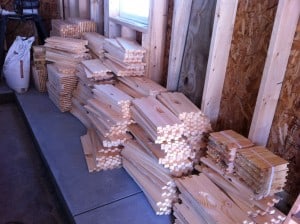
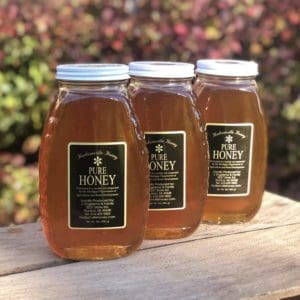
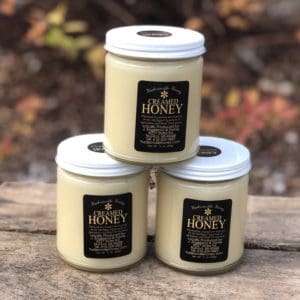
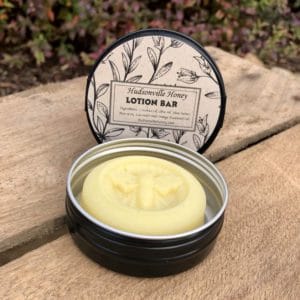
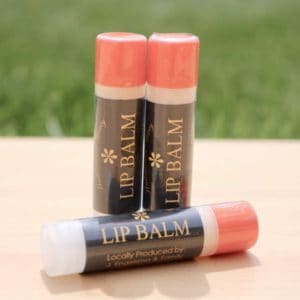
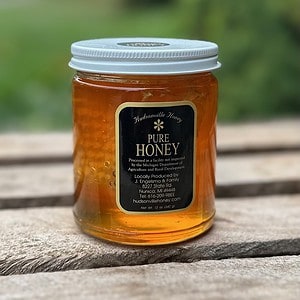
Is there any chance we could be added to your list of suppliers of bee equipment and bees? We are a local source with excellent Amish built woodenware and reasonable prices. Thanks for considering.
Judging by the photo, your daughter is not so happy painting these boxes ))